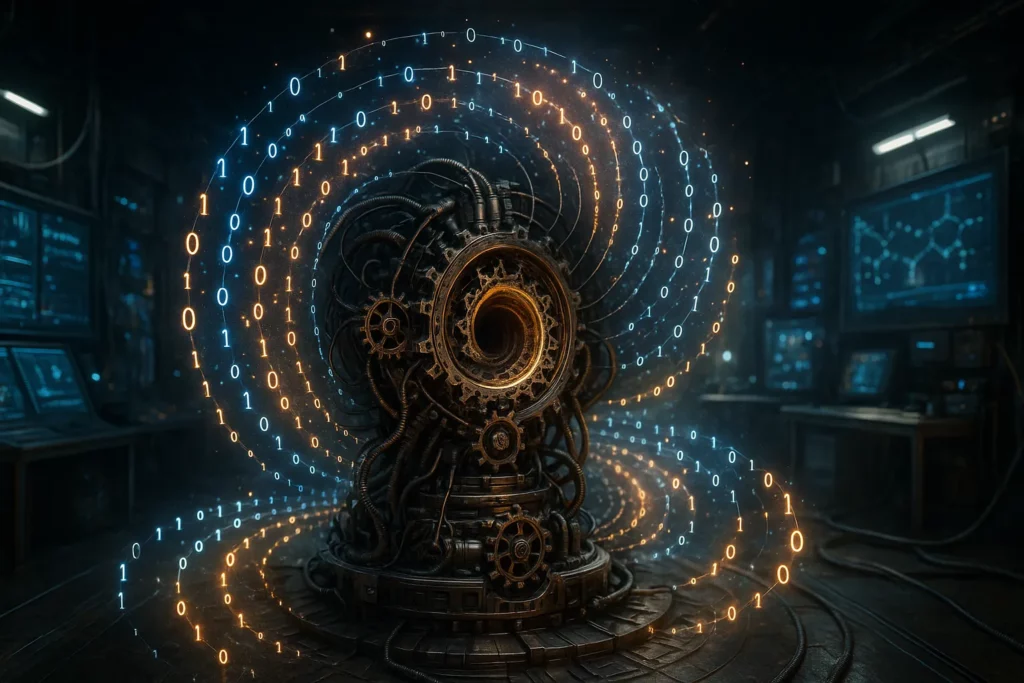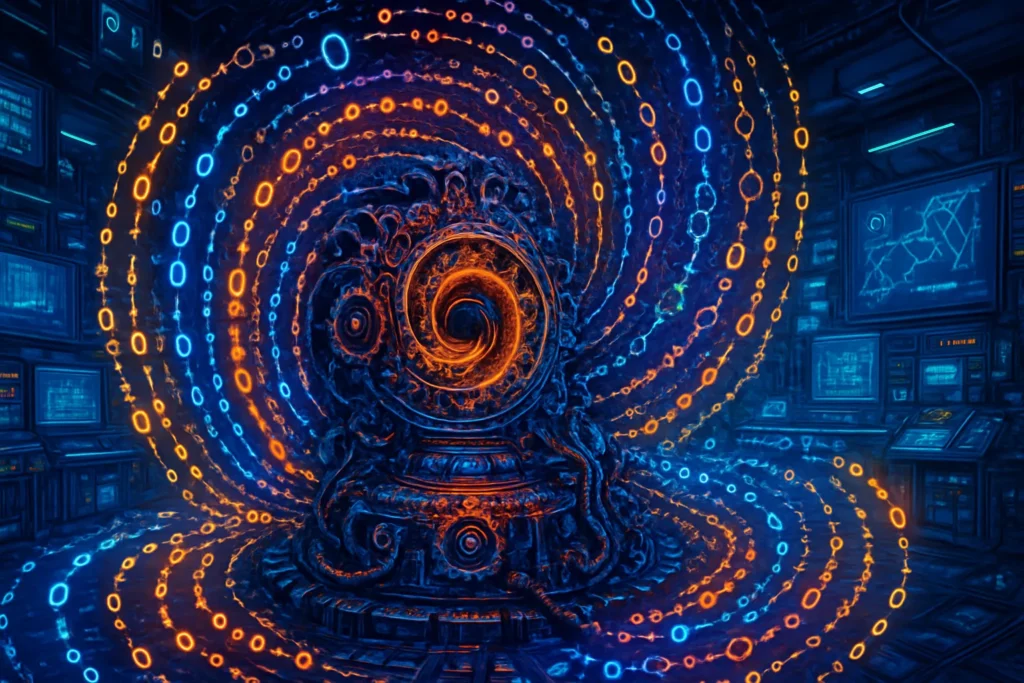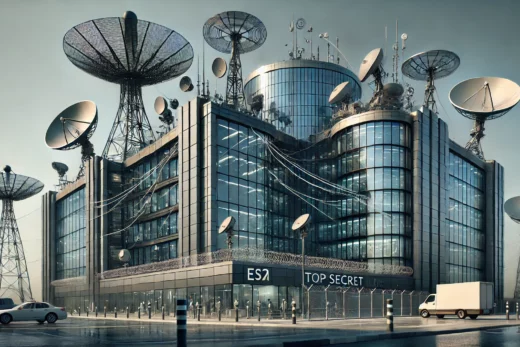
Integrating Quantum Entangled Memory (QEM) into the Temporal Distortion Computational Core (TDCC) architecture requires a meticulous design that harmonizes quantum memory capabilities with the TDCC’s unique temporal processing paradigm. Below is a comprehensive breakdown of this integration, detailing each component and its role within the system.
1. Overview of TDCC and QEM
Temporal Distortion Computational Core (TDCC):
- Functionality: Utilizes micro-scale singularities at each CPU core to send computation results back in time by fractions of a second, enabling recursive refinement until the correct result is achieved instantaneously.
- Key Components:
- Temporal Processing Unit (TPU): Manages time-reversed execution cycles.
- Quantum Singularity Containment (QSC) Chamber: Stabilizes micro-singularities.
- Phase-Locked Quantum Caches: Stores pre-computed solutions across multiple time paths.
- Quantum Entangled Memory (QEM): Ensures data coherence between past and future states.
- Chrono-Synchronization Controller (CSC): Maintains causality consistency and prevents paradoxes.
Quantum Entangled Memory (QEM):
- Functionality: Stores quantum information using entangled states, allowing instantaneous synchronization across spatial and temporal distances.
- Advantages:
- Non-local Storage: Enables data to be stored and retrieved across different locations and times without loss of coherence.
- High Fidelity: Maintains the integrity of quantum states over extended periods and distances.
- Scalability: Supports the expansion of quantum networks and systems.
2. Integration Strategy
2.1. Embedding QEM into TDCC Architecture
Design Approach:
- Distributed QEM Nodes: Deploy QEM units adjacent to each TPU, allowing immediate access to entangled memory for time-reversed computations.
- Entanglement Links: Establish entangled pairs between QEM units across different TPUs to facilitate coherent data sharing and synchronization.
Operational Workflow:
- Computation Initiation: TPU begins processing a task.
- Result Propagation: Upon completion, results are sent back in time via the micro-singularity.
- QEM Synchronization: The QEM unit updates its state to reflect the new data, ensuring consistency across the system.
- Recursive Refinement: If discrepancies are detected, the process repeats, refining the result until convergence is achieved.
2.2. Maintaining Temporal Coherence
Challenges:
- Causality Violations: Risk of paradoxes due to information traveling back in time.
- Data Integrity: Ensuring that entangled states remain coherent despite temporal manipulations.
Solutions:
- Chrono-Synchronization Controller (CSC): Monitors and regulates data flow to prevent causality violations.
- Quantum Error Correction: Implements protocols to detect and correct errors in entangled states, preserving data integrity.
3. Technical Specifications
3.1. Quantum Entangled Memory (QEM) Modules
- Composition: Utilize rare-earth-ion-doped crystals (e.g., ^167Er^3+:Y_2SiO_5) for long coherence times and compatibility with telecom wavelengths .
- Storage Duration: Achieve storage times exceeding 1.9 microseconds, sufficient for TDCC operations.
- Integration: Embed QEM modules within the TDCC’s physical infrastructure, ensuring minimal latency.
3.2. Entanglement Generation and Distribution
- Photon Sources: Employ integrated photonic chips to generate entangled photon pairs.
- Distribution Network: Use optical fibers to distribute entangled photons between QEM units, maintaining synchronization across the system .
4. Advantages of Integration
- Instantaneous Computation: Leveraging QEM allows TDCC to achieve near-instantaneous computation by accessing pre-refined results from the future.
- Enhanced Scalability: The modular nature of QEM facilitates the expansion of TDCC systems without compromising performance.
- Robust Data Integrity: Quantum error correction and the CSC ensure that data remains consistent and free from paradoxes.
5. Potential Challenges and Mitigations
| Challenge | Mitigation Strategy |
|---|---|
| Decoherence of Entangled States | Implement advanced quantum error correction protocols and maintain cryogenic environments to preserve coherence. |
| Synchronization Across TPUs | Utilize high-precision timing systems and the CSC to coordinate operations between TPUs. |
| Physical Integration Constraints | Design compact QEM modules and optimize the TDCC layout for efficient space utilization. |
6. Future Directions
- Extended Storage Times: Research into materials and techniques to further increase QEM coherence times.
- Dynamic Entanglement Management: Develop systems capable of dynamically establishing and reconfiguring entanglement links based on computational demands.
- Integration with Quantum Networks: Explore the potential of connecting TDCC systems to broader quantum communication networks for distributed processing.
https://counter.news/theoretical-design-of-a-temporal-distortion-computational-core-tdcc/
By meticulously integrating Quantum Entangled Memory into the Temporal Distortion Computational Core, we can harness the synergistic potential of quantum mechanics and temporal manipulation, paving the way for unprecedented computational capabilities.
- Quantum storage of entangled photons at telecom wavelengths in a crystal
This study demonstrates the storage and retrieval of entangled telecom photons using ^{167}Er^3+ ions in a crystal, achieving a storage time of 1.936 μs, which is significantly longer than previous works.
Read the full article on Nature Communications - The entanglement of two quantum memory systems 12.5 km apart
Researchers achieved entanglement between two quantum memory systems separated by 12.5 km, marking a significant step toward practical quantum networks.
Read the full article on Phys.org - Long-lived quantum memory enabling atom-photon entanglement over 101 km telecom fiber
This research reports on atom-photon entanglement over a 101 km telecom fiber, utilizing long-lived quantum memory to maintain high fidelity during transmission.
Read the full article on arXiv - Entangling single atoms over 33 km telecom fibre
The study demonstrates heralded entanglement between two independent, remote single-atom quantum memories over 33 km of telecom fiber, representing a milestone in quantum networking.
Read the full article on arXiv - Quantum memory
An overview of quantum memory, its significance in quantum computing and communication, and various types including atomic gas and solid-state quantum memories.
Read the full article on Wikipedia - Quantum entanglement
A comprehensive explanation of quantum entanglement, its experimental demonstrations, and applications in quantum information science.
Read the full article on Wikipedia - Quantum network
Details the development and current status of quantum networks, including recent advancements in quantum communication and distributed quantum computing.
Read the full article on Wikipedia
These sources provide in-depth information on the topics discussed and can serve as valuable references for further exploration into Quantum Entangled Memory and its integration into Temporal Distortion Computational Core architectures.

Weird Gate Creation 1



